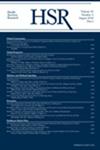To compare theoretical strengths and limitations of common immortal time adjustment methods, propose a new approach using multiple imputation (MI), and provide practical guidance for using MI in precision medicine evaluations centered on a real-world case study.
Methods comparison, guidance, and real-world case study based on previous literature. We compared landmark analysis, time-distribution matching, time-dependent analysis, and our proposed MI application. Guidance for MI spanned (1) selecting the imputation method; (2) specifying and applying the imputation model; and (3) conducting comparative analysis and pooling estimates. Our case study used a matched cohort design to evaluate overall survival benefits of whole-genome and transcriptome analysis, a precision medicine technology, compared to usual care for advanced cancers, and applied both time-distribution matching and MI. Bootstrap simulation characterized imputation sensitivity to varying data missingness and sample sizes.
Case study used population-based administrative data and single-arm precision medicine program data from British Columbia, Canada for the study period 2012 to 2015.
While each method described can reduce immortal time bias, MI offers theoretical advantages. Compared to alternative approaches, MI minimizes information loss and better characterizes statistical uncertainty about the true length of the immortal time period, avoiding false precision. Additionally, MI explicitly considers the impacts of patient characteristics on immortal time distributions, with inclusion criteria and follow-up period definitions that do not inadvertently risk biasing evaluations. In the real-world case study, survival analysis results did not substantively differ across MI and time distribution matching, but standard errors based on MI were higher for all point estimates. Mean imputed immortal time was stable across simulations.
Precision medicine evaluations must employ immortal time adjustment methods for unbiased, decision-grade real-world evidence generation. MI is a promising solution to the challenge of immortal time bias.



